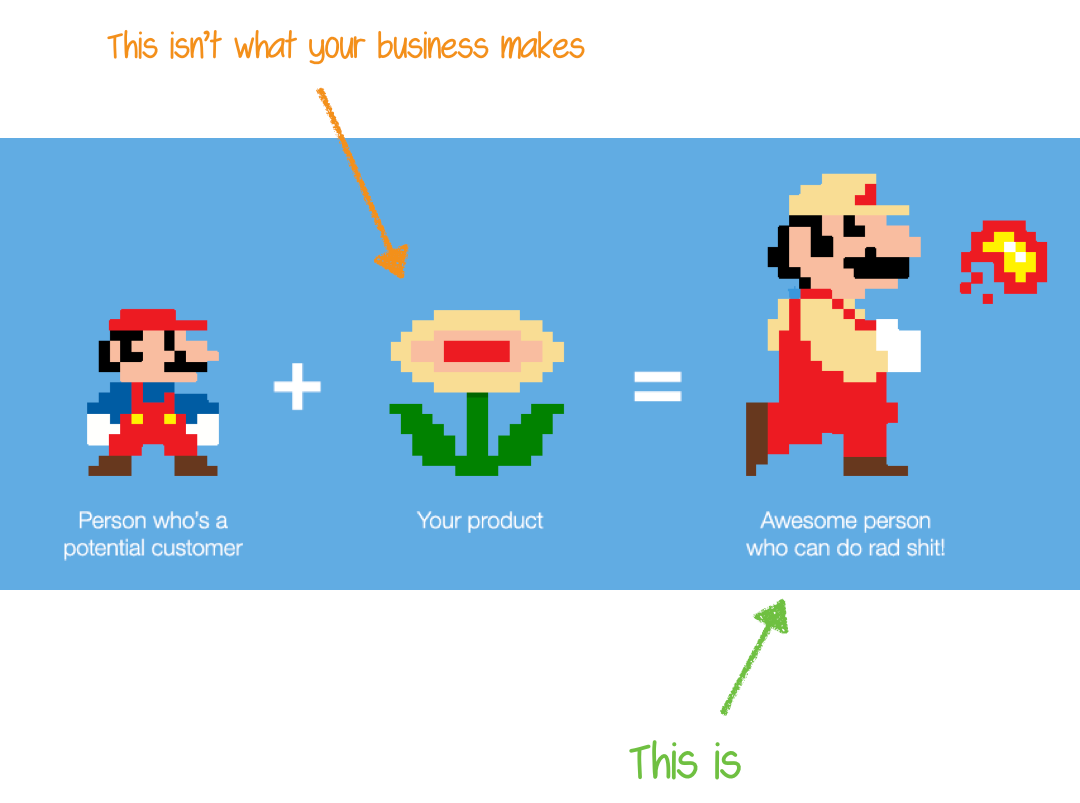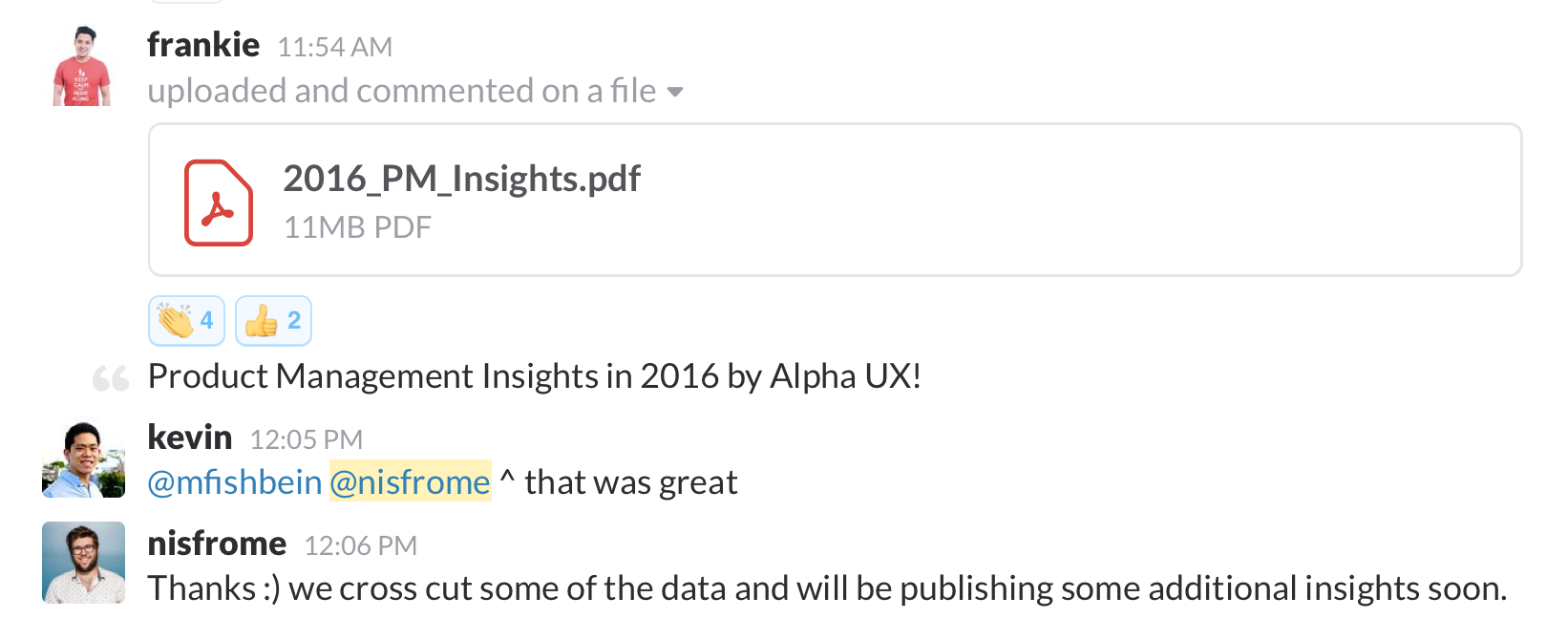If you’re a content marketer that’s struggling to convert leads to customers, ask yourself a very simple question before creating your next piece of content:
“Would I want another company to post this exact content on their own website?”
If the answer is no, then the content is not worth creating, and you’re thinking wrongly about content marketing and your company’s value proposition. To understand why, consider the reason that customers purchase anything. It’s not because they want whatever widget you’re selling, but rather because they want what the widget will enable them to do. You’ve probably seen this hit graphic, but instead of laughing, focus on the ramifications it has.

Image source: Samuel Hulick
You cannot hope to sell the offering of superpower-infusing plants if you do not first convince customers of the aspirational value of destroying obstacles with fireballs. They are intrinsically connected. According to extensive research, the most impactful type of content is that which communicates the benefits of the aspirational value that your offering enables. You can only convert a lead into a buyer after they believe in those benefits.
HubSpot can’t sell their CRM until they convince prospective buyers to believe in the benefits of inbound marketing. Atlassian can’t sell their project management software until they convince prospective buyers to believe in the benefits of agile development. Blue Apron can’t sell their subscription ingredient boxes until they convince prospective buyers to believe in the benefits of cooking meals at home.

Your content marketing efforts should focus on the benefits of the unique aspirational value that your company’s offering enables. The more people that believe in the benefits, the more ready buyers you have available. The purpose of gating content behind landing pages is merely to make the two-way interaction with believers a little more convenient. But if your content emphasizes the benefits of the aspirational value, it’ll still be effective if someone literally steals it and posts it elsewhere. Perhaps even more so.
My company sells a platform for on-demand user research. A product team only buys our offering if they believe in the benefits of rapid user research, namely that it mitigates risk, leads to smarter product decisions, and keeps key stakeholders aligned. Therefore, all of our blog posts, reports, and efforts either evangelize those benefits or connect existing believers to our company’s offering.
So when someone fills out a contact form to download a report from our website, I don’t care when I see them share it freely on a Slack forum. I’m actually happy to see it. They’re essentially a third-party advocating for the benefits of an aspirational value which we can uniquely deliver.

There are certainly other legitimate content marketing goals, like creating engaging or entertaining posts that drive traffic and subscribers. Such initiatives don’t evangelize an aspirational value but can serve useful purposes like building lists of potentially relevant people. However, if the goal is to convert leads to buyers, only create content that first passes the litmus test I’ve described above.
Author’s note: If you don’t know how to create such content, it’s possible that you aren’t yet able to properly articulate the aspirational value or benefits enabled by your company’s offering. Or if you think that competitors would benefit from publishing the same content, it’s possible that your company doesn’t enable a unique aspirational value. In either case, content marketing is not going to remedy the situation anyway. For the former, consider talking to customers and testing content marketing assumptions. For the latter, advertising is probably a better investment.
This is a guest post by Nis Frome, Co-Founder and Content Lead at Alpha.
Join thousands of DOERS reading the Raise the Bar newsletter. A daily digest of timely, must-read posts on sales, marketing, and growth engineering.
Also published on Medium.